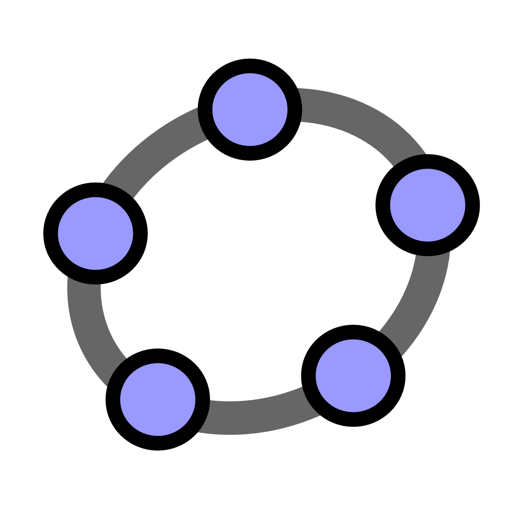

#Geogebra classic spreadsheet download
The tools remain virtually identical, just reshuffled a bit, so you can follow along on whatever GeoGebra platform - download or web - you wish. GeoGebra is undergoing a fair bit of unbundling, but I am still fond of the Classic Interface. While not quite optimized for mathematical research, it can be a great graphing tool, interactive teaching and assessment tool, mathematical aid, or just a fun toy. GeoGebra is a wide variety of integrated technologies in one package - a Computer Algebra System, 2D and 3D Graphing Calculator, 2D and 3D Constructive Geometry Solver, Spreadsheet system, and more. Many of the things we will say also apply to the for-profit clone Desmos, but there is little reason to support corporate power-grabs no matter how many non-binding assurances they make on their website of their good intent. Today we will be talking about two tools that are excellent for creating intricate graphics with very fine control, embedded $\LaTeX$, and scalable output. Graphing in this plot-look-modify-plot loop is OK, but it can be both unintuitive and hard to control specific details. Interactive Plotting with GeoGebra and Inkscape.I’ve also made a similar GeoGebra applet for this problem, which I need to clean up before putting up. It also connects to African Sona designs. The pool table representation connects in interesting ways to Euclid’s algorithm for finding the greatest common divisor of two numbers. Lately, I have been thinking about this problem a lot it’s the basis for a chapter in the book I’m working on. This was a creative approach that I had not considered before (but that is reflected in the chapter I’m writing). One group of students looked at how the shape of the table affected the final path, and how having lines of symmetry or rotational symmetry about the center affected which corner the ball would eventually land in. I think that with the spreadsheet, they’ll be able to see so many more cases quickly, that some visual patterns will be more obvious.

I often define a primitive pool table as one whose sides have GCD 1, but that’s really more information that I’d like to give. When I’ve used the problem in the past, I’ve found that many students need some structure to be able to organize their data enough to get anything out of the problem. I have not yet had a chance to try this spreadsheet with students. However, making the spreadsheet forces you to think about how the coordinates are related to the problem, which can lead to insight. The last page of the spreadsheet from the video is for exploration (you don’t have to watch the video or make the spreadsheet yourself to use it). if you start at (1,0) on a rectangle whose sides have GCD=2, you get a loop that goes through all squares). The end result is much better than expected - this representation uses a slider to show many cases in a short period of time, and with it I noticed patterns that I never had before (e.g. Since I like playing with Excel and trying to extend what it can do, I wrote a spreadsheet to represent the problem. The NCTM has a nice applet to test cases one at a time. This is a classic problem solving activity that I first saw many years ago in Mathematics: A Human Endeavor.


 0 kommentar(er)
0 kommentar(er)
